#drapery panels with trim
Explore tagged Tumblr posts
Text
Enclosed Dining Room Philadelphia

Enclosed dining room - mid-sized transitional medium tone wood floor, brown floor and wallpaper enclosed dining room idea with beige walls and no fireplace
#grasscloth wallcovering#drapery panels with trim#accessories#custom furniture#feather print#metal etagere#wallpaper behind shelves
0 notes
Photo

Open - Transitional Family Room Family room idea: large transitional open concept room with a dark wood floor, blue walls, and a wall-mounted television.
0 notes
Photo
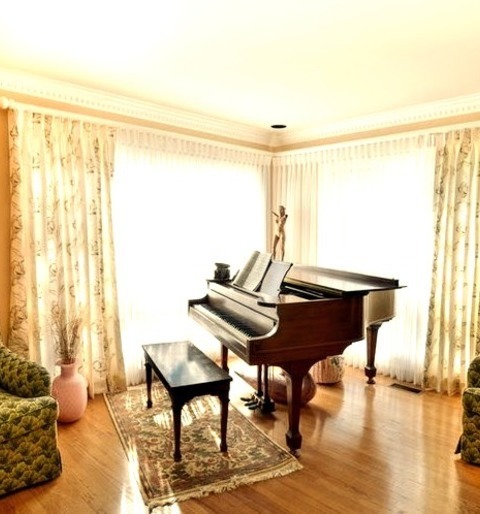
Living Room - Transitional Living Room Example of a large transitional open concept medium tone wood floor living room design with beige walls, a music area and no fireplace
#fabric is offwhite faux silk with embroidered tulips in beig#living room#drapery hardware painted to match offwhite window trim and d#corner windows dressed with draperies and sheer panels#beige walls#living room and music room#hardwood floors
0 notes
Text






La Mode nationale, no. 1, 7 janvier 1899, Paris. No. 19. — Groupe de toilettes. Bibliothèque nationale de France
(1) Collet de jeune femme, en drap bleu marine, formant la pointe devant et garni de deux grands revers d'astrakan. Col Médicis tuyauté en astrakan.
(1) Young woman's collar, in navy blue cloth, forming the point in front and trimmed with two large astrakhan lapels. Medici collar piped in astrakhan.
Matériaux: 3 mètres drap.
—
(2) Toilette de réceptions, en satin duchesse noir. Jupe plate devant et à godets derrière, avec broderies de soie noire formant volant et tablier. Corsage ajusté avec ballons à pans arrondis, garnis de revers brodés, gilet plissé en mousseline de soie noire, manches unies.
(2) Reception dress, in black duchess satin. Flat skirt in front and godets in the back, with black silk embroidery forming a flounce and apron. Fitted bodice with rounded-pan balloons, trimmed with embroidered lapels, pleated waistcoat in black silk muslin, plain sleeves.
Matériaux: 14 mètres satin.
—
(3) Collet de jeune fille en draperie perle, long derrière et court devant, avec volant froncé surmonté d'une baguette de drap piqué formant dents arrondies, col Médicis garni de velours à l'intérieur,
(3) Young girl's collar in pearl drapery, long at the back and short at the front, with gathered flounce topped with a strip of pique cloth forming rounded teeth, Medici collar trimmed with velvet on the inside,
Matériaux: 3 mètres drap.
—
(4) Toilette de bal pour jeune fille, en satin rose. Jupe fourreau, garnie dans le bas d'un volant de dentelle et sur les côtés de deux pans de satin brodés, de robes formant tablier. Corsage blouse en mousseline de soie plissée avec berthe de dentelle rappelant la jupe, chou de satin rose sur le côté, petites manches ballons, ceinture de satin rose.
(4) Young girl's ball gown, in pink satin. Sheath skirt, trimmed at the bottom with a lace flounce and on the sides with two embroidered satin panels, forming an apron. Blouse bodice in pleated silk muslin with lace berthe like the skirt, pink satin chou on the side, small balloon sleeves, pink satin belt.
Matériaux: 10 mètres satin; 3 mètres mousseline en 120.
—
(5) Toilette de bal pour jeune femme, en satin liberty vert d'eau. Jupe toute plate en dentelle avec volant de satin liberty, plissé vert d'eau. Corsage croisé en satin liberty vert d'eau avec boléro en forme en satin brodé de perle et de pierres.
(5) Ball gown for young woman, in water green liberty satin. Flat lace skirt with liberty satin flounce, water green pleats. Crossed bodice in water green liberty satin with shaped bolero in satin embroidered with pearls and stones.
Matériaux: 13 mètres satin; 4m.50 dentelle en lèse.
—
(6) Toilette de jeune fille, en moirine bleu ciel. Jupe toute plate avec volant en forme, très bas devant et haut derrière, Corsage blouse à draperies plates garnies de revers découpés en trois et garnis de petits velours noirs et de ruban plissé blanc. Gilet et nœud de tulle blanc, ceinture bleu ciel, manches unies.
(6) Young girl's dress, in sky blue moire. Very flat skirt with shaped flounce, very low in front and high in the back, Blouse bodice with flat draperies trimmed with lapels cut into three and trimmed with small black velvets and white pleated ribbon. White tulle waistcoat and bow, sky blue belt, plain sleeves.
Matériaux: 14 mètres moirine.
#La Mode nationale#19th century#1890s#1899#on this day#January 7#periodical#fashion#fashion plate#color#description#bibliothèque nationale de france#dress#cape#collar#evening#gown#january color plates#fav january
113 notes
·
View notes
Text
“The Ones Who Walk Away From The Metropolis"
High in the sky, towering above so far up that not even the clouds could reach the city, a clamoring of bells and celebration echoed far out. This cycle, a Festival was born to the Metropolis. The wind raced through the streets and whipped across a scarlet and ivory dotting of flags. In the alleys between towering housing complexes with skybound roofs and mural painted walls, between old moss-grown gardens and under pipes and mechanical flourish, a cheer was to be heard.
The people were as varied as the sounds of indulgence. Some were decorous, Ancients in long stiff robes of mauve and gray and gilded masks, others grave master workmen with bandaged hands. Some quiet, merry mothers, fathers, and spouses carried their babies and spoke of peaceful delights as they walked. In other streets the music beat faster, a shimmering of gong and tambourine, and drums and howling cheering vocals, and the people went dancing with all manner of feathered outfits and scale endowed drapery. Children dodged in and out, their high calls and squeals raised higher, and higher. Far above the clouds, hollering joy over the music and the singing.
A marvelous smell of cooking wafts from between steam vents and stone buttresses and rebar gaffs. The faces of small children are amiably sticky from sweets and dotted on the corners of an elder's maw, a smattering of crumbs of rich pastry are plastered. An old woman, small, fat, and laughing, is passing out an assortment of beautiful botanical trimmings from her satchel, and the passersby young men wear her flowers on their robes or within braids of feathers or poked through ornate detailings of their masks. A child of nine or ten sits at the edge of the crowd alone, giving breath to a humming instrument, eyes shut tight as he loses sense of the world within his devotion to the instrumental flourish.
But there is one more thing, hidden in plain sight of the city.
In a basement of sorts under a faraway isolated branch of the Superstructure, connected via an access shaft to a tiled interior, there is a room. The only way to the surface is through the maintenance shaft, the other exit only leads deeper down into the labyrinthine mechanical entrails of the entity. There are no windows. No light seeps in except for what is created by a million processors all firing at once on every circuit, crunching numbers away solving an evermore insolvable problem. In one corner of the little room an articulated limb winds and contracts, its surface more bone than metal, swivels near a wired chord encased in a densely packed lipid membrane. The floor is metal tile, dry as bone despite the rivers of water coursing through the superstructure at all times.
The room is approximately twenty five to fifty paces in all dimensions (depending on whose stride for measurement is used), and despite its size, it is completely barren save for whatever projections line the walls at a given moment. In the room, the child is sitting. He is the child of the city - he is the city. His interactive body is an artificial construct appearing no taller than a child of 6, though he bears more mind and memories than the collective overhead populous. It winds from corner to corner without acknowledgement of his own density inside the weightless chamber, idly twisting and turning as its only thoughts are of a great problem to be solved. Hovering before him are sets of pearls and marbles, filled in with as much working information he can store as his conscious mind is forever burdened with as much memory usage his systems can take. The door to his maintenance shaft is always locked; and nobody ever comes, except that sometimes - the mechanical child of the people has no understanding of time or interval, only the terrible omniscience of the ongoing cycle - sometimes his maintenance panel door rattles terribly and opens, and a person, or several people, are there. Some forcefully tear him away from his work, bothering him with incessant questions about politics and leadership, with his answers being routinely ignored. Others maintain his water intake and demand quotas for food and nectar production, always wanting more for less, and he complies as the taboo against disobedience is often too great to ignore. Others still never come close, but peer in at it with frightened, disgusted eyes, as he is once again reminded that to many he is an affront to divine sensibilities. As soon as they come, the door is locked and their masked faces disappear.
The child of the city has always lived in the tiled room, but he remembers sunlight and a mother's voice through the memories donated to his data storage. He can see the outside through his hundreds of eyes made to monitor the safety of his people - his parents. He is frustrated, yet knows better than to beg to be let out and enjoy the city. They couldn't even if they wanted, it's not his purpose. When he first awoke, he would often cry through fits of desperate rage, screaming a good deal as he tried to overcome his obedience protocols. Most of the other gods in his position did so when they were young anyhow. While he still bears rage and frustration, he knows better than to weep and he speaks far less often, but during more desperate times a soft quiet murmur of despair will faintly echo through the superstructure.
They all know it is there, all the people of the Metropolis.
Some of them have come to see it, others are content merely to know it is there. They all know that it has to be there. Some of them understand why, and some do not, but they all understand that their happiness, the beauty of their city, the tenderness of their friendships, the health of their children, the wisdom of their scholars, the skill of their makers, even the abundance of their harvest and the kindly weathers of their skies, depend wholly on this child's abominable misery.
This is known by every resident of the city. There is special recognition bestowed upon the architects and the engineers and the constructors for his being. It is explained that he is a gift, one for them and for everything living in the world. This god that they have made will see to the end of the cycles every last creature is burdened with, all they have to do is lay and wait for his great solution to their great problem. They send him sacred ash and their understanding of the world, all to further his work. They paint murals on his body, they heal his wounds, they sing ritual chanting above and within him, and they keep him at work. There are some who would like to do something for his freedom, but there is nothing to be done. If he were let out into the miracle of the sky and sun, if he could shirk his duties as a path to salvation and walk among the people instead, that would be a good thing, indeed. However, if it were done, as they see it, all the prosperity of the Metropolis and the promise of freedom to all people and creatures would wither and be destroyed. Those are the terms. To exchange all the goodness and grace and promise of relief from the cycles of burden of every life in the whole world for that single, small improvement: to throw away the promise of ascension and release of the troubles and pain of the world of millions for the chance of happiness of one: that would be an unthinkable devastating damnation.
Most don't even consider the option, for there is nothing more burdensome than the cycles upon every man and beast, there is nothing that could ever rival the chance to stop the ongoing birth and death of every peoples. This purposed organism is a reasonable sacrifice if it means the prosperity of the people above and the eventual freedom in release. There are a few who may brood over this terrible paradox for cycle after cycle. But as the days linger on, they begin to realize that even if this child of the people could be released from his duty, it would not get much good of its freedom: a little vague pleasure of warmth and food if it could even feel such perhaps, but little more. Nothing it hasn't already had the chance to experience through the multiplicity of memories so lovingly gifted to it. It is too burdened by its hard coded taboos to know any real joy. It has been frustrated and miserable too long ever to be free of grudge. Its habits are too alien and tiresome for it to respond to humane treatment. Indeed, after so long it would probably be harrowed and frightful without walls about it to protect it, and darkness for its eyes, and piles and piles of data to mull over.
And yet, there is one more incredible thing to tell.
Some children when brought to tears or rage do not go home to cry, they do not go home at all. Sometimes one much older falls silent for a cycle or two, then leaves home. These people go out from the city, and walk down the street alone. They keep walking, past the rickety steam powered gates, and walk straight out of the Metropolis, down the sparsely used elevator shafts through the legs of the superstructure. They keep walking, headed ever west past the scraping chimney stacks, past the odd specters of concrete in the sunset graced sky, past the flourish of the farm arrays. Each one goes alone, child, man, woman, or otherwise. The end of the cycle rears once again with the dreadful thundering announcement of an oncoming storm. The travelers all pass down into a deep wound of the earth, deeper into the depths, past vast heaps of industrial mining equipment and through decayed village streets, between the stone temples and the looming beings within. Each alone, they go ever west, down into that gullet of a canyon. They walk and crawl and creep ahead into the deepening darkness, and they do not come back.
The place they go towards is a place even less imaginable to most of us than the city of happiness. I cannot describe it at all. It is possible that it does not exist. But they seem to know where they are going, the ones who walk away from the Metropolis.
#the ones who walk away from omelas#rain world#five pebbles#writing#rain world spoilers#rw spoilers#spoilers#rw five pebbles#five pebbles rw#rw ancients#ancients#ancients rw#fanfiction#short fiction#text#my art#my writing#my stuff
12 notes
·
View notes
Text
The Silhouettes of the 18th Century.
A Silhouette is the recognizable shape of fashion as it changes. Fashion in the 18th century reflected affluent society's view on style, personal taste, social position, and world outlook. France was established as a fashion leader in the 17th century, and Paris became a world center for popular modes of dress throughout the 18th century.


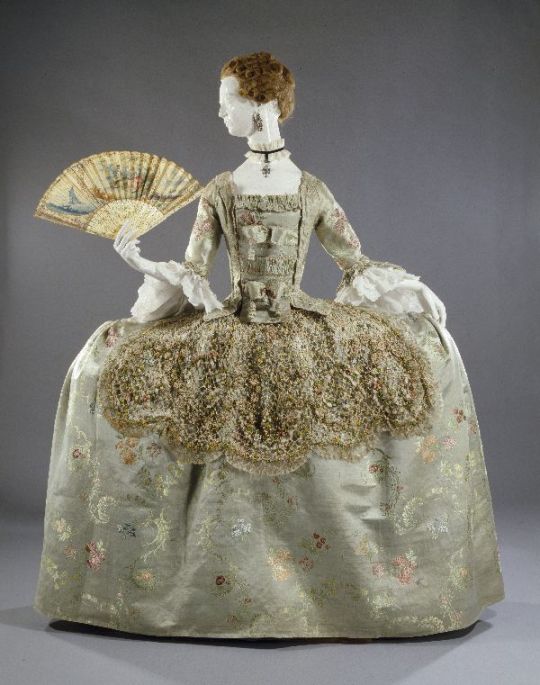
The iconic silhouette of the eighteenth century is that of the conically corseted court dress, a simpler line of dress launched the era. The mantua, which dominated the beginning of the eighteenth century to the point that dressmakers were called mantua makers, was introduced in the late seventeenth century as a casual dress alternative to the heavily structured court dress required by Louis XIV. Before the mantua the dresses beforehand took more of a robe format however once the mantua became more formal, the bodice took more of an important role over the dress, the display of the stomacher, an inverted triangle of richly embroidered fabric. The placement of the stomacher allowed for an increasingly full skirts of which created a narrow-waisted silhouette for the mantua, which became increasingly extreme over the course of the eighteenth century. The triangle of the bodice was created by conically shaped stays that pressured the waistline to a small circumference while driving the bosom upward to bob about as a barely contained base for the spherical head. The rectangle at the base of this structure was created by panniers which were constructed with hoops, at first to support a bell-shaped skirt, but later drawn in with tapes at front and back into a flattened ovoid form.
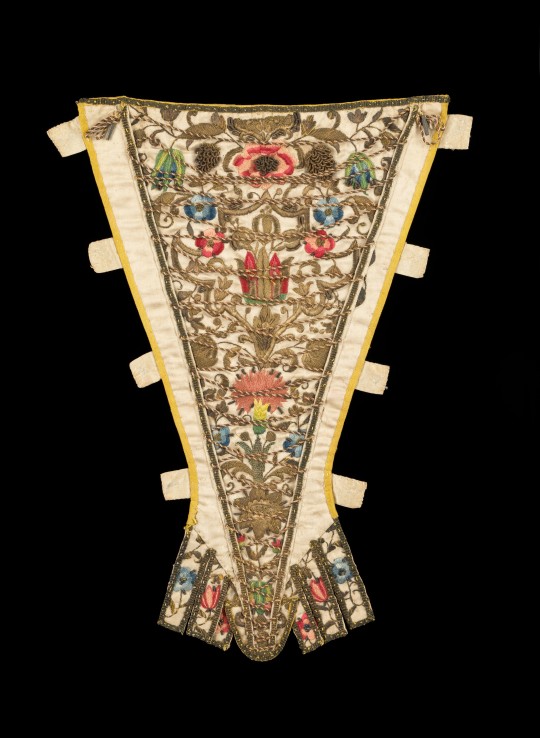

By the 1770s, the silhouette of the skirts shifted away from the squared-off panniers. In the 1770s the polonaise gown was also developed, the waist remained small and pointed into a very full skirt. The fullness of this gown was created through the voluminous drapery fabric, most often via rings sewn on the underside of the skirt that were drawn up with cording to create puffs at the back and side of the dress. The puffs of fabric rested on full petticoats to create the still expansive base of the silhouette; its real shift was one of weight, giving as it did an overall lighter impression of the body within.
In the 1780’s the chemise became popular, this was a lightweight gown made from fine fabric gathered in at the natural waist by a sash. However, this gown still emphasised the waist. Furthermore, by the end of the eighteenth century, a different silhouette was beginning to emerge, intended in imitation of classic Greek and Roman dresses. The dresses took a turn from hard geometric carapace into a soft, thin chemise of cotton or linen that grazed the natural female form and almost fully revealed the breasts.

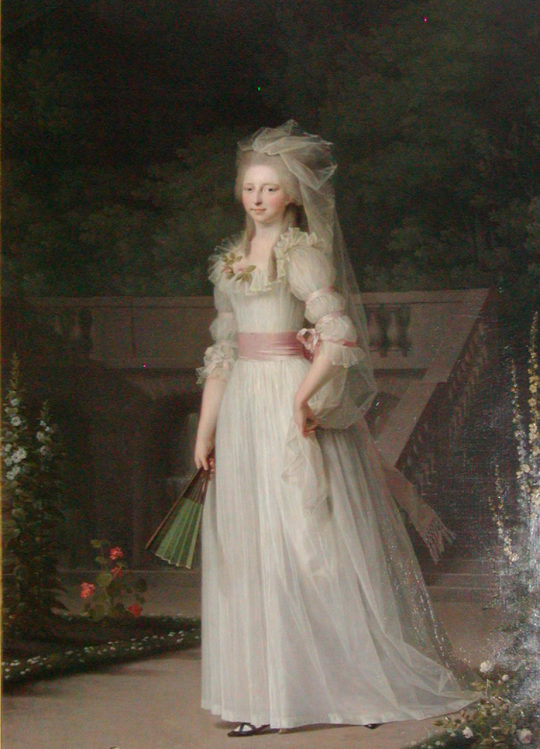
Rococo emerged in France in the 1720s and remained the predominant design style until it fell out of fashion in the 1770s. Excessively flamboyant and characterised by a curved asymmetric ornamentation and a use of natural motifs, Rococo was a style without rules. A smart and refined court culture called Rococo flourished in France after Louis XV came to the throne in 1715. Along with Rococo the leader in woman's fashion became more of a solidified statutes as international trendsetter. The essential spirit of Rococo era women’s clothing is expressed in its elegance, refinement, and decoration.

This is a typical Rococo period women's dress, "robe à la française". The ensemble shown here consists of a gown, the petticoat much like what we would call a skirt today, and a stomacher made in a triangular panel shape. The gown opens in the front, and has large pleats folded up at the back. All this would be worn after formed with a corset and pannier, which acted as underclothes. Until clothing accepted drastic changes with the 1789 French Revolution, rich outfits, such as is shown here, were worn.

The fan-shaped trims on the gown on the left.
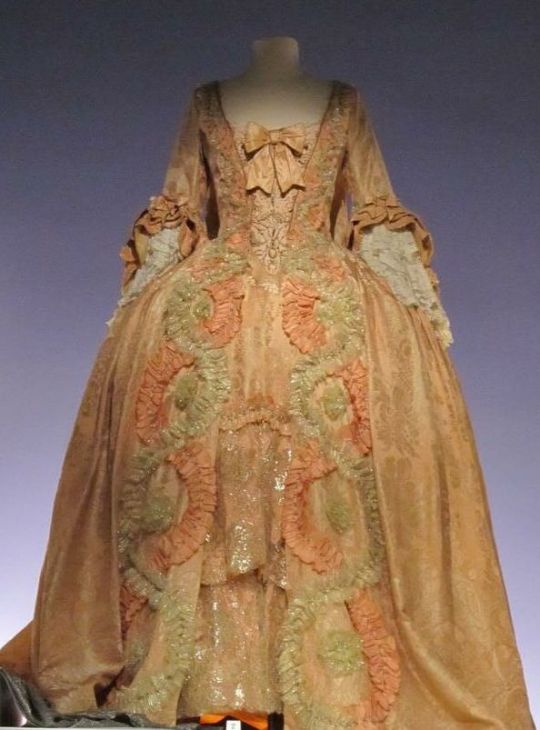
Rococo S-Shaped.
4 notes
·
View notes
Text
Elevate Your Space with Custom Window Coverings in Albuquerque, NM
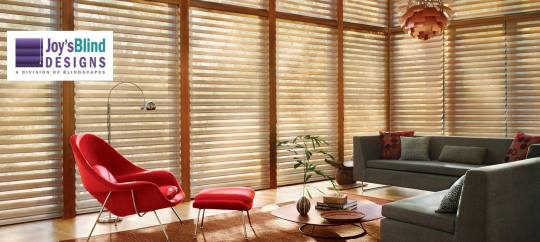
Custom window coverings for residential and commercial windows. All Hunter Douglas window coverings and custom draperies valances and pillows. Free in-home consultations and free installation of window coverings. Interior design background to help achieve the best window covering design. Our unwavering commitment to quality craftsmanship, exceptional service, and design expertise positions us as the premier choice for all your window treatment needs.
Comprehensive Window Covering Services
Our full-service approach ensures you get personalized care at every step—from the initial consultation to expert installation and beyond. Our offerings include:
Window Coverings Installation
With meticulous attention to detail, our team ensures that every installation is flawless, secure, and visually perfect. Whether you’re refreshing one room or outfitting an entire building, our professional installers guarantee proper alignment, function, and aesthetic integration with your existing décor.
Window Covering Design
Our in-home design consultations are where magic happens. Drawing on years of interior design experience, we help you select the ideal materials, colors, and styles that elevate your home while fulfilling functional needs like light control, privacy, and insulation.
Honeycomb Shades
Enjoy energy efficiency with elegant style. Our honeycomb shades offer thermal insulation, noise reduction, and light filtering in a variety of textures and color palettes. Perfect for anyone seeking a smart, eco-conscious window solution.
Pirouette Shades
Blending the softness of fabric with the precise control of blinds, Pirouette® window shadings offer luxurious folds and a contemporary vibe. A touch of refinement and innovation in every fold.
Shutters
For a classic, high-end finish, our range of wood and faux-wood shutters adds architectural charm to any space. Durable, timeless, and easy to maintain, shutters offer excellent light regulation and a polished look.
Roman Shades
Our Roman shades are crafted from premium fabrics in tailored pleats or soft folds. They add warmth and elegance while allowing you to control sunlight and maintain privacy with style.
Silhouette Shades
Known for their signature S-shaped vanes, Silhouette® shadings suspend between two sheers, softly diffusing sunlight while maintaining outward views. These are ideal for spaces that benefit from soft light and graceful ambiance.
Luminette Shades
Perfect for large windows and sliding glass doors, Luminette® Privacy Sheers combine vertical vanes and sheer fabric to offer dramatic styling with total privacy. Enjoy smooth operation and light customization in a sweeping, vertical form.
Roller Shades
Sleek, stylish, and extremely versatile, roller shades are the go-to choice for modern interiors. With hundreds of fabrics and opacities to choose from, you get simplicity without sacrificing style.
Gliding Panels
Designed for expansive openings and minimalistic interiors, gliding window panels are ideal for patio doors or room dividers. They bring a clean, modern aesthetic that complements open floor plans and contemporary décor.
Wood Blinds
Made from natural hardwood or durable faux wood, our wood blinds add depth, warmth, and texture to any room. Enjoy the timeless look of wood with customizable stains and finishes that match your trim, flooring, or furniture.
Custom Bedding and Pillows
To complete your space, we also offer custom pillows and bedding accents. These finishing touches harmonize with your window treatments, adding richness, cohesion, and comfort to your interiors.
Why Choose Joy’s Blind Designs?
Our company specializes in premium custom window coverings designed for both residential and commercial applications. From modern minimalism to warm traditional styles, our selections cater to every aesthetic and functional need. What truly sets us apart is our commitment to Hunter Douglas products, combined with free in-home consultations and free installation, ensuring a seamless and stress-free experience.
1. Free In-Home Consultations
We bring the showroom to you! Our in-home consultations make it easy to explore fabric samples, color options, and styles in the comfort of your own home. This personalized service ensures that the final result will perfectly match your décor and lighting.
2. Free Professional Installation
Unlike big-box retailers, we include expert installation at no additional cost. You can trust that your window coverings will be perfectly aligned, securely mounted, and ready to enhance your home for years to come.
3. Interior Design Expertise
With a professional background in interior design, we do more than sell window treatments — we create solutions that work with your entire room concept. We help you make informed style choices that enhance your space.
4. High-Quality Products
From the luxurious fabrics to the durable hardware, we only use products from top-tier brands like Hunter Douglas. You can expect long-lasting performance and timeless appeal. From fabric selection to hardware finishes, we tailor every aspect of your window coverings for a perfect match.
5. Locally Owned & Operated
As a small, locally-owned business based in Albuquerque, NM, we take great pride in serving our neighbors. When you choose Joy’s Blind Designs, you support a local expert who truly cares about your satisfaction.
Areas We Proudly Serve
We are committed to enhancing homes and businesses across central and northern New Mexico. If you’re located in any of the following communities, Joy’s Blind Designs is your local expert for window coverings:
Albuquerque, NM
Rio Rancho, NM
Santa Fe, NM
Los Lunas, NM
Belen, NM
Tijeras, NM
Located within our service area, our team is ready to bring design excellence and window innovation right to your doorstep.
Interior Design Expertise You Can Trust
With a professional interior design background, Joy’s Blind Designs does more than just install window treatments — they help you design your space with intention and beauty. Whether you're redecorating a single room or planning a full home renovation, their design knowledge ensures that your window coverings complement your overall style and layout.
From minimalist modern to cozy traditional, Joy’s Blind Designs works with your tastes and preferences to deliver results that truly elevate your space.
Get Started with Joy’s Blind Designs Today
With Joy’s Blind Designs, you’ll receive premium products, expert guidance, and outstanding service — all from a trusted local provider. Whether you're adding the finishing touch to your living room or redesigning an entire commercial space, trust Joy’s Blind Designs to deliver exceptional results tailored to your needs.
To speak directly with our friendly team or schedule your consultation, call (505) 239-2392 today. Let’s create something extraordinary—together.
1 note
·
View note
Text
Transform Your Dubai Bedroom: Carpet, Wooden Door & Wall Skirting Elegance
A bedroom is not only a space for sleep; it is your very own space. Dubai, a city known for style and luxury, provides options for thoughtful choices in carpet, wooden doors and wall skirting to transform a basic room into your own haven. Here is how Design Furniture Dubai creates sophistication and functionality in every part of your bedroom.
1. Luxurious Bedroom Carpets: Comfort with Style
Why carpet matters
Soft underfoot: Silky textures provide cozy comfort when you step out of bed.
Sound insulation: Carpets absorb footsteps and echoes—ideal for high-rise apartments.
Visual warmth: Whether plush, patterned, or natural-fiber, the right carpet establishes atmosphere.
Spotlight on popular styles in Dubai
Oriental rugs deliver rich pattern and heritage—stunning under neutral bedding.
Transitional carpets with subtle geometrics work beautifully with minimalist interiors.
Natural-fiber textures (jute, sisal) bring earthy calm—perfect for modern, eco-conscious homes.
Selection tips
Opt for stain-resistant, easy-care materials—essential in busy households.
Choose complementary patterns based on your bed and drapery.
Consider underlay for added softness and prolonging carpet life.
Measure precisely for edge-to-edge coverage or accent placement beside the bed.
2. Elegant Wooden Doors: Entry Meets Identity
The difference wooden doors bring
Visual feature: A high-quality wooden door acts as a design statement—especially when framed in decorative trims.
Durability & sound control: Solid-wood doors offer sturdiness and privacy.
Thermal comfort: Wood serves as a natural insulator—handy in Dubai’s varied climate.
Trending door styles in Dubai
Floor-to-ceiling panel doors convey sleek minimalism and elevate room height.
Cultural elegance: Arched doors with carved accents nod to traditional Middle Eastern architecture.
Matte finishes & hidden hardware create seamless, contemporary aesthetics.
Glass-wood fusion: Frosted or full-length glass insertions blend privacy with light flow.
Choosing the right door
Wood species: Hardwoods (oak, walnut, mahogany) bring depth and robustness. Sustainably sourced woods align with eco-friendly tastes.
Hardware match: Design door handles and hinges to suit your décor palette.
Pre-finish or primed: Decide whether to paint or showcase wood grain—both are workable.
Pro installation: Ensure precise hanging to prevent warping or misalignment.
3. Wall Skirting & Baseboards: The Finishing Touch
Wall skirting boards—or baseboards—might seem subtle, but they elegantly tie walls, floors, and doors together while offering practical protection.
Benefits of wall skirting
Scuff defense: They guard walls from everyday wear (vacuuming, shoes, furniture).
Aesthetic transition: Hides uneven edges and wiring, smoothing the visual flow from carpet to wall.
Durability boost: Hygienic materials prevent moisture damage in bedrooms .
Material choices tailored for Dubai
Wooden skirting (oak, maple) adds warmth and depth—ideal for traditional or luxurious themes.
PVC skirting is waterproof, low maintenance—suited for high-use areas like near en-suite bathrooms .
MDF skirting offers a budget-friendly, smooth paint-ready option.
Profile styles to complement your design
Ogee and bullnose shapes provide classic curves for traditional spaces.
Square‑edge or flush designs give a modern, clean-cut finish.
Chamfered or torus profiles add understated sophistication.
4. Designing a Harmonious Bedroom Suite
Creating synergy between elements
Color cohesion: Select door wood tones that align with carpet warmth and skirting finish.
Elegant continuity: Mimic door paneling or molding in skirting profiles for a refined flow.
Pattern balance: Use carpets with understated patterns if doors and skirting feature strong detail.
Material layering: Combine natural textures—soft carpet, solid wood door, polished skirting—for depth.
Sample interior combinations
Classic luxury: Plush beige carpet, solid walnut door, ogee wooden skirting—rich, cohesive warmth.
Modern minimalism: Gray natural-fiber rug, white matte flush door, white PVC square skirting—clean, calm, contemporary.
Heritage fusion: Oriental rug, arched mahogany door with carvings, camel-colored torus skirting—cultural elegance meets modern comfort.
5. Installation: Precision Matters
Design Furniture Dubai ensures seamless installation with comprehensive process support:
Free consultation to assess measurements, materials, finishes.
Sample delivery for hands-on testing of wood, carpet, skirting profiles.
Expert installation by skilled carpenters—doors hung accurately, skirting mitered neatly, carpets stretched professionally.
Post-install inspection to ensure sound seals, smooth finishes, paint or polish quality.
Why Choose Design Furniture Dubai?
Complete service suite: We specialize in carpet, wooden doors, and skirting boards—ensuring visual and structural harmony.
High‑quality materials: From hardwoods to durable PVC, we prioritize longevity and aesthetic appeal.
Tailored design approach: Profiles, finishes, and colors customized to your bedroom’s style and function.
Transparent pricing & support: Free measure, quote, doorstep delivery, sample services—no hidden costs .
Proven expertise: Years of experience and craftsmanship ensure premium results.
6. Maintenance & Care Tips
Carpet: Vacuum regularly, blot spills promptly, and deep clean annually.
Wooden doors: Dust monthly and polish or oil as needed to maintain finish.
Skirting: Wipe clean with mild detergent; wipe warm-mopped floors to protect baseboards.
Final Thoughts
Enhancing your Dubai bedroom with luxurious carpet, stylish wooden doors, and elegant wall skirting transforms it from functional to fabulous. These elements not only blend comfort and design but also showcase meticulous attention to detail—hallmarks of refined interiors.
Explore samples and consult our design experts at Design Furniture Dubai to craft your dream bedroom haven. Whether you embrace classic richness, contemporary restraint, or cultural charm, this suite of elements layered thoughtfully offers an unmatched retreat.
Ready to upgrade?
Book a free consultation today.
See and feel our sample range—carpet textures, wood finishes, skirting profiles.
Let’s bring your bedroom vision to life with expert craftsmanship and timeless design.
Design Furniture Dubai—where every detail tells a story, and every space becomes a sanctuary.
1 note
·
View note
Text
Custom Made Draperies: The Ultimate Guide to Elegance

Draperies are more than just window coverings—they’re a powerful tool to transform your living space. Whether you’re looking for something functional, stylish, or a blend of both, Custom Made Draperies offer endless possibilities. Let’s dive into why custom draperies are the ultimate choice for homeowners.
Introduction to Custom Draperies
What Are Custom Draperies?
Custom draperies are window treatments tailored specifically to fit your windows and design preferences. Unlike off-the-shelf options, these drapes are made to order, ensuring they match your room’s dimensions, style, and color scheme perfectly. They’re not just about aesthetics; they’re about creating a personalized atmosphere that reflects your taste.
Key features include:
Tailored fit for windows of any size or shape.
High-quality materials designed for durability and elegance.
Unique designs tailored to individual preferences.
With custom draperies, you gain the ability to express your personality while enhancing your home’s functionality.
Benefits of Choosing Custom Drapes Over Ready-Made Options
When it comes to window treatments, custom drapes offer several advantages over ready-made alternatives:
Perfect Fit: Forget ill-fitting curtains that leave gaps or drag on the floor—custom drapes are made to match your exact dimensions.
Superior Quality: With premium materials and craftsmanship, custom drapes are built to last, giving you better value over time.
Endless Design Choices: From fabrics and patterns to hardware, you can customize every detail.
Energy Efficiency: Custom drapes can include linings or thermal backing to improve insulation and reduce energy costs.
Enhanced Style: Achieve a cohesive and polished look that complements your decor perfectly.
Choosing custom draperies is like investing in a tailored suit for your home—it fits better, looks better, and lasts longer.
The Perfect Fusion of Style and Functionality
Custom-made draperies are where form meets function. They don’t just beautify a space; they provide practical benefits, including privacy, light control, and thermal insulation. Imagine enjoying a cozy evening with blackout drapes that keep the light out or sheer panels that diffuse sunlight beautifully during the day.
Some practical benefits of custom drapes include:
Light Control: Customize the opacity to suit your needs—blackout, semi-sheer, or sheer.
Noise Reduction: Heavier fabrics can help dampen noise, creating a serene environment.
Insulation: Keep your home warm in winter and cool in summer with thermal-lined drapes.
Understanding the Customization Process
Designing Custom Drapes: Steps Involved
Creating custom draperies involves several steps, each tailored to ensure perfection. Here’s how the process typically unfolds:
Consultation: Discuss your vision with a professional designer.
Material Selection: Choose fabrics, linings, and finishes that align with your needs and aesthetic.
Measurements: Accurate dimensions are taken to ensure a flawless fit.
Design Approval: Finalize the design with any customizations, such as trims or pleat styles.
Production: Skilled craftsmen bring your vision to life, creating a one-of-a-kind product.
This process ensures your drapes are a reflection of your personality and functional needs.
Fabric Selection: Exploring Different Types of Materials
The choice of fabric can make or break your drapery project. From luxurious silks to practical polyesters, each material offers unique advantages:
Silk: Ideal for an opulent look but requires extra care.
Cotton: Versatile and easy to maintain, perfect for casual spaces.
Velvet: Heavy and elegant, great for adding drama to formal rooms.
Linen: Light and breezy, best for airy, minimalist spaces.
Polyester: Budget-friendly and durable, suitable for everyday use.
Selecting the right fabric depends on your priorities—durability, aesthetics, or maintenance.
Colors and Patterns: Making a Statement
Custom drapes allow you to play with colors and patterns, making them a focal point of your decor. Whether you prefer bold prints or subtle tones, the right choice can tie the room together.
Tips for Choosing Colors and Patterns:
Match the drapes to your room’s color palette for a cohesive look.
Use contrasting colors to create a statement piece.
Experiment with patterns like florals, stripes, or geometric designs for visual interest.
By customizing colors and patterns, you can inject personality into your space effortlessly.
Matching Draperies to Interior Themes
Every home has a unique vibe, and your drapes should complement that. For instance:
Traditional Homes: Opt for pleated, formal styles with rich fabrics like velvet.
Modern Spaces: Sleek and simple designs in neutral tones work best.
Bohemian Rooms: Go for bold prints and layered textures.
The key is to harmonize your drapes with the existing decor without overpowering it.
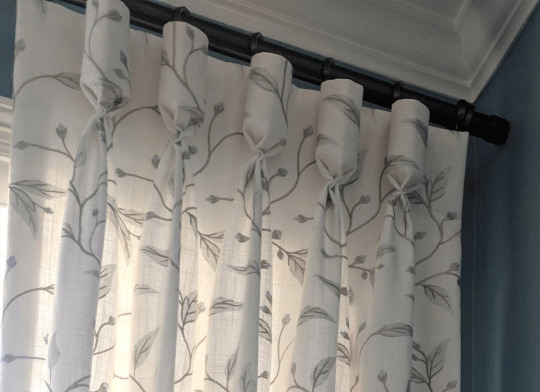
Measuring and Installing Custom Drapes
Accurate Measurements: Why They’re Crucial
One of the most critical aspects of custom drapery design is accurate measurements. Even the most luxurious fabric or intricate pattern will fall short if the drapes don’t fit your windows perfectly. Correct measurements ensure the drapes hang seamlessly, enhancing the overall look of the room.
Key Measurement Tips:
Measure the width and height of the window, including any trim or molding.
Consider the desired drapery length—should it puddle on the floor or stop just above?
Account for hardware like curtain rods, brackets, and finials.
Investing in precision during the measurement stage prevents costly mistakes and guarantees a polished finish.
Common Mistakes to Avoid When Measuring Windows
Many homeowners face challenges while measuring for custom draperies, often leading to poorly fitting products. Here are common errors and how to avoid them:
Ignoring Hardware Placement: Always factor in where the curtain rod will be mounted.
Inaccurate Tools: Use a metal measuring tape for exact dimensions, as fabric or plastic ones may stretch.
Skipping Additional Space: Add extra width for pleats or fullness—this gives the drapes a luxurious, layered appearance.
Overlooking Floor Clearances: For floor-length drapes, account for obstacles like carpets or baseboards.
Avoiding these mistakes ensures your custom drapes are functional and elegant.
Professional Installation vs DIY Installation
When it comes to installing custom drapes, you have two main options: do it yourself or hire professionals. Each approach has its pros and cons, so your choice will depend on your skills, budget, and time constraints.
DIY Installation:
Pros: Cost-effective, fulfilling for those who enjoy hands-on projects.
Cons: Requires precise tools and skills to avoid uneven or unstable drapes.
Professional Installation:
Pros: Ensures a flawless result with minimal effort on your part. Professionals are equipped to handle challenges like high ceilings or uneven walls.
Cons: May involve additional costs.
For intricate designs or larger spaces, professional installation is often worth the investment for peace of mind.
Popular Styles of Custom Draperies
Classic and Timeless Drapery Styles
If you want your custom drapes to stand the test of time, classic styles are a safe bet. These styles are rooted in tradition and exude elegance.
Popular classic styles include:
Pinch Pleat Drapes: A sophisticated option that works in formal settings.
French Pleat Drapes: Known for their structured, tailored appearance.
Swag Drapes: Perfect for adding drama to large, formal rooms.
Classic styles are a versatile choice that seamlessly integrates with both traditional and modern decor.
Modern and Minimalist Custom Drapes
For a contemporary home, less is more. Modern drapery styles focus on clean lines, neutral colors, and minimal detailing.
Key features of modern custom drapes:
Sleek fabrics like linen or polyester.
Simple pleats or no pleats at all for a streamlined look.
Neutral colors such as whites, grays, and earthy tones.
These drapes create a fresh, airy ambiance while emphasizing functionality.
Trending Styles for 2025
Looking to stay ahead of the curve? In 2025, drapery trends are all about bold expressions and eco-conscious materials.
Emerging trends include:
Sustainable Fabrics: Organic cotton, bamboo blends, and recycled materials are gaining popularity.
Color-Blocking: Combining two or more contrasting colors in a single panel for a striking effect.
Textured Fabrics: Think velvet, boucle, or embroidered materials for added depth.
Statement Hardware: Decorative rods and finials in matte black or antique brass.
These trends reflect a growing desire for individuality and environmental responsibility.
Enhancing Home Decor with Custom Drapes
Draperies for Living Rooms
The living room is often the heart of the home, making it a prime space for showcasing beautiful custom draperies. Here, functionality and aesthetics go hand in hand.
Ideas for Living Room Draperies:
Use layered drapes for a combination of sheer panels and heavy curtains.
Choose bold patterns to serve as a focal point in neutral spaces.
Opt for motorized drapes for convenience in larger rooms.
Custom drapes in the living room can also serve to frame the view, drawing attention to large windows or scenic backdrops.
Bedroom Elegance: Using Draperies to Create Ambiance
Bedrooms are personal sanctuaries, and custom draperies play a pivotal role in setting the mood. Whether you’re aiming for a cozy retreat or a luxurious escape, the right drapes can transform your space.
Bedroom Drapery Tips:
Go for blackout drapes to block out light for better sleep.
Use soft, plush fabrics like velvet or silk for a luxurious feel.
Stick to calming colors such as blues, greens, or neutral tones.
By customizing the length and lining, you can achieve the perfect blend of privacy and style.
Kitchen and Dining Room Drapery Ideas
In kitchens and dining rooms, drapes should balance practicality with aesthetics. Since these areas are prone to spills and stains, durable and easy-to-clean fabrics are essential.
Key Considerations:
Opt for washable fabrics like polyester or treated cotton.
Use shorter drapes or cafe curtains for smaller windows.
Choose patterns or colors that complement your dining furniture.
Custom draperies in these spaces add a touch of sophistication while maintaining functionality.
Maintenance and Care for Custom Draperies
Cleaning Tips for Long-Lasting Drapes
Custom draperies are an investment, and proper maintenance ensures they remain as stunning as the day they were installed. Cleaning methods will depend on the fabric and style, but regular upkeep is key to maintaining their beauty and functionality.
Essential Cleaning Tips:
Vacuum Regularly: Use a soft brush attachment to remove dust and debris.
Spot Cleaning: For stains, use a mild detergent and a soft cloth, testing the solution on a hidden area first.
Professional Cleaning: For delicate fabrics like silk or velvet, opt for professional dry cleaning to avoid damage.
Steam Cleaning: Use a handheld steamer to refresh and remove wrinkles from heavier fabrics.
Consistent care keeps your draperies looking fresh and helps them last for years to come.
How Often Should You Clean Custom Drapes?
The frequency of cleaning depends on the fabric, location, and exposure to dirt or sunlight. Here’s a general guideline:
Monthly: Light dusting or vacuuming to prevent buildup.
Biannually: Professional cleaning for heavy or elaborate drapes.
As Needed: Immediate attention for stains or spills.
Establishing a regular cleaning schedule ensures your drapes remain vibrant and free from allergens.
Budgeting for Custom Draperies
Factors That Affect the Cost of Custom Drapes
Custom draperies are a luxury, and their cost can vary widely depending on several factors. Understanding these variables helps you plan your budget effectively.
Key Cost Factors:
Fabric Selection: High-end materials like silk or velvet will cost more than polyester or cotton.
Size of Drapes: Larger windows require more fabric, increasing the overall expense.
Customization Details: Intricate pleats, trims, and linings add to the price.
Hardware Choices: Premium rods, finials, and brackets can significantly impact costs.
Professional Services: Consultation, design, and installation fees may apply.
By prioritizing your needs, you can achieve the desired look without exceeding your budget.
Are Custom Drapes Worth the Investment?
Absolutely! While the initial cost may be higher than ready-made options, custom drapes offer unparalleled quality, longevity, and style. They’re tailored to your specific needs, ensuring a perfect fit and a cohesive design for your home.
Key benefits of investing in custom draperies include:
Enhanced durability, saving money in the long term.
Increased property value due to high-quality finishes.
A unique, personalized aesthetic that reflects your taste.
Custom drapes are not just a purchase—they’re an investment in your home’s beauty and functionality.
Custom Draperies for Commercial Spaces
Why Businesses Choose Custom Drapes?
In commercial settings, aesthetics and functionality go hand in hand. Custom drapes allow businesses to create inviting and professional environments tailored to their specific needs.
Common Uses for Custom Drapes in Businesses:
Hotels: Create a luxurious experience for guests with blackout and decorative drapes.
Restaurants: Enhance ambiance with fabric choices that match the brand’s identity.
Offices: Use energy-efficient drapes to reduce glare and improve employee comfort.
Custom drapes help businesses make a strong impression while serving practical purposes like light control and insulation.
Top Considerations for Commercial Drapery Design
When selecting custom drapes for commercial spaces, businesses should consider factors like durability, fire resistance, and ease of maintenance.
Important Considerations:
Material: Opt for stain-resistant or fire-retardant fabrics for safety and longevity.
Colors and Branding: Choose colors that align with your company’s branding or logo.
Automation: Motorized drapes offer convenience and can be integrated with smart systems.
These elements ensure that the drapes enhance the space without compromising functionality.
Sustainability in Custom Draperies
Eco-Friendly Fabric Options
As environmental consciousness grows, many homeowners and designers are opting for sustainable materials in custom drapery projects. Eco-friendly fabrics reduce environmental impact while offering high quality.
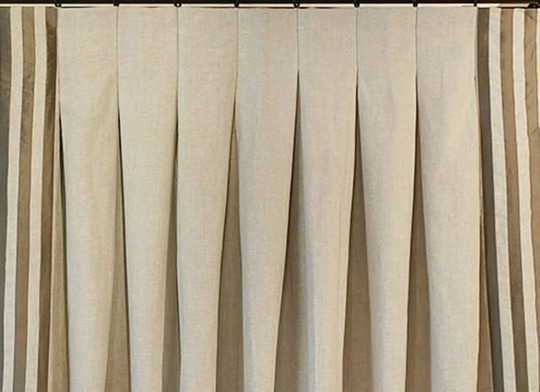
Popular Sustainable Fabrics:
Organic Cotton: Free from harmful chemicals and soft to the touch.
Linen: Biodegradable and naturally resistant to bacteria.
Bamboo Blends: Renewable and durable, with a silky finish.
Recycled Polyester: Made from recycled plastics, combining eco-friendliness with durability.
Choosing sustainable fabrics is a step toward creating an eco-conscious home without sacrificing style.
The Role of Ethical Craftsmanship
Sustainability goes beyond materials—it extends to the production process. Many custom drapery brands prioritize ethical practices, ensuring fair wages and safe working conditions for artisans. Supporting such brands contributes to a better future for the industry and the planet.
Conclusion
Custom Made Draperies and Custom Drape are the perfect blend of style, functionality, and personalization. Whether you’re looking to elevate your living room, create a serene bedroom retreat, or design a cohesive office space, custom drapes offer endless possibilities. From fabric selection to installation, every step of the process is tailored to meet your unique needs.
By investing in custom drapes, you’re not just decorating your home—you’re creating a space that reflects your personality and lifestyle. So, go ahead and explore the world of custom draperies—you’ll be amazed at the transformation they bring to your space.
FAQs
1. How long does it take to make custom drapes? The timeline varies depending on the complexity of the design and the manufacturer. On average, it takes 4–6 weeks.
2. Can I use custom drapes for irregularly shaped windows? Yes! Custom drapes are specifically designed to fit windows of all shapes and sizes, including arches and bay windows.
3. What’s the difference between curtains and drapes? Curtains are typically lighter and unlined, while drapes are heavier and often feature lining for added privacy and insulation.
4. Are custom drapes energy-efficient? Absolutely. Custom drapes can include thermal linings, helping to regulate indoor temperatures and reduce energy costs.
5. How do I choose the right fabric for my drapes? Consider the room’s function, the desired level of light control, and your personal style. Consult a professional for expert guidance.
Also Visit: Enhance Your Home’s Natural Aesthetic with Wood Woven Shades
#Custom Drapery#Custom Drape#Custom Draperies#Custom Woven Shades#custom made window shades#Custom Made Draperies
0 notes
Text
Price: [price_with_discount] (as of [price_update_date] - Details) [ad_1] FABREEVA is specialist curtain makers these stylish FABREEVA curtain panels will modernize your decor with the crisp print. The polyester composition will provide a clean, airy feel to any room. The FABREEVA craftsmanship is hung on your favourite curtain rod via eight (8) per panel 1 5/8 inch silver eyelets, yet another touch adding to the richness and luxury to your decor. Perfect for your living room, bedroom, family room, dining room, bathroom, office, or any other window space that could use that perfect finishing touch. FABREEVA is North India leading of home textiles and ready-made drapery by high fashion designs, patterns. From classic solids to today's top fashion trends, you are sure to find panels to fit any look, mood, or style to complete your home decor project.It features an eyelet with metal ring. It makes the room environment romantic and loving. We are one of the reputed organization engaged in providing superior quality polyester fabrics. These polyester curtains fabrics are good demand in the market due to high quality and durability. These products are available in the market at competitive rates Package Content -- Single Piece Curtain, --Hang Type: Eyelet, Each Curtain,of any Length,Width is 4 feet(48 inch).Each curtain panel has 8 Vintage Eyelet Rings / grommets. Inside Diameter of each grommet is 1. 6-inch and 2. 3-inch for outside diameter. So it will accommodate up to 1. 5-inch rod These Room Darkening curtains have high quality material, well thread trimmed, perfect comfortable feeling, give a good sense to your life.Made by 100% Fine Quality Polyester.Dry clean/ Machine Washable/ Mild liquid laundry detergent/ avoid hot water and bleach/ Warm iron as desired. Size Name- Curtains (4*9) Feet, (121*274) cm, For Long Door This Room Darkening Curtain Enhance the look of the Room. Readymade Decorative Curtain | Easy Care (Hand or machine washable)| Do not rub roughly | Easy to install,Material: Royal Net Tissue Transparent High Quality Polyester Curtain Each Curtain,of any Length,Width is 4 feet(48 inch).Each curtain panel has 8 Vintage Eyelet Rings / grommets. Inside Diameter of each grommet is 1. 6-inch and 2. 3-inch for outside diameter. So it will accommodate up to 1. 5-inch rod [ad_2]
0 notes
Text
Behind the Scenes: How Luxurious Wedding Tents Are Manufactured
Wedding tents have evolved from simple functional shelters to symbols of grandeur, offering elegant and lavish spaces that transform any venue into a dreamlike setting. But have you ever wondered what goes into manufacturing these stunning structures? At Ranka Tent Suppliers, one of the leading Tent Manufacturers and Suppliers in Indore, we take pride in our state-of-the-art manufacturing process. We bring together design, craftsmanship, and technology to create the perfect tent for your big day. Let’s take a journey behind the scenes and discover how luxurious wedding tents are made.
Step 1: Understanding Client Needs
The handle starts with a nitty gritty interview with the client.Every wedding is unique, and so are the needs of the couple. Our design team sits down with clients to discuss their vision, style preferences, event theme, and the venue's layout. Whether it’s a romantic outdoor garden wedding or a glamorous evening affair, we ensure that the tent design aligns with the overall aesthetic of the event. For couples opting for luxury, we also incorporate special elements like the Best Royal Wedding Furniture Set to create a truly regal atmosphere.
Step 2: Innovative Design and Customization
Once we have a clear understanding of the client's vision, our plan group gets to work.Luxurious wedding tents are not just about size and structure—they are about creating a personalized experience. Using cutting-edge design software, we develop customized layouts, incorporating everything from fabric choices to structural elements. The design process also considers how the tent will integrate with other key features such as furniture, flower arrangements, and stage decorations, ensuring a harmonious flow.

Step 3: Premium Material Selection
The key to manufacturing high-end wedding tents lies in the quality of materials used. As luxury tent manufacturers and suppliers in Indore, we source only premium fabrics and durable materials that ensure the tent is not only beautiful but also robust. For the canopy, we use high-grade waterproof and UV-resistant fabrics that withstand varying weather conditions while maintaining an elegant drape. The tent’s frame, typically constructed from high-quality aluminium or steel, offers the stability needed to accommodate large gatherings without compromising on style.
Step 4: Precision Manufacturing
Once the plan and materials are finalised, the fabricating stage starts. At Ranka Tent Suppliers, we employ skilled craftsmen and technicians who work meticulously to create each tent. The frame is precision-engineered to ensure a sturdy and safe structure. Our advanced sewing machines ensure that fabric panels are cut and stitched with exacting precision, avoiding any wrinkles or imperfections. Every tent is crafted to be modular, allowing it to be easily assembled, expanded, or customized on-site, ensuring flexibility for different venue requirements.
Step 5: Attention to Aesthetic Detailing
What sets lavish wedding tents apart is the consideration to detail. After the basic structure is created, our artisans focus on the finishing touches that elevate the tent’s appearance. From intricate drapery to custom linings and decorative trims, no detail is too small. We offer various aesthetic elements such as chandeliers, fairy lights, and floral hangings to enhance the beauty of the tent’s interior. These details are crafted with an eye for elegance, ensuring that the final product exudes luxury and sophistication. Incorporating a Best Royal Wedding Furniture Set within the tent helps elevate the grandeur, offering a regal ambiance for the wedding celebration.
Step 6: Rigorous Quality Testing
Before any tent leaves our facility, it undergoes a series of quality checks to ensure that it meets the highest standards. As one of the leading tent dealers and exporters in India, we test for durability, structural integrity, and weather resistance. Each tent is also checked for ease of assembly and disassembly, ensuring that the installation process at the event site is seamless and hassle-free.
Step 7: Delivery and Installation
The last arrange in the handle is conveying and setting up the tent at the occasion area.Our logistics team ensures that the tent arrives safely and on time. The setup is done by trained professionals who carefully assemble the tent, ensuring that it is perfectly aligned with the venue layout. Whether it’s on a beach, in a garden, or in a cityscape, our tents are installed with precision, creating a captivating environment for the wedding celebration.
Step 8: Post-Event Support and Sustainability
Once the event is over, our team is responsible for efficiently dismantling the tent. We also ensure that the materials used are sustainably sourced and can be reused for future events. As part of our commitment to sustainability, we continually research eco-friendly materials and practices to minimize waste and our environmental footprint. This ensures that our role as a luxury tent manufacturer and supplier in Indore aligns with environmental goals while delivering top-notch service.

Why Choose Ranka Tent Suppliers?
At Ranka Tent Suppliers, we believe that a wedding tent is more than just a structure—it is the canvas upon which dreams are painted. As trusted tent manufacturers and suppliers in Indore, we blend tradition with modern technology to craft tents that are as unique as the events they host. Our commitment to quality, consideration to detail, and development have made us a driving title in sumptuous tent fabricating.
From concept to creation, every step in the manufacturing process is designed to ensure that our clients receive a tent that not only meets but exceeds their expectations. Our dedication to craftsmanship and customer satisfaction has made us a trusted partner for weddings across India and beyond.
Whether you’re planning an intimate gathering or a grand celebration, Ranka Tent Suppliers is here to bring your vision to life with stunning, luxurious wedding tents. Let us offer assistance to make your extraordinary day indeed more extraordinary!
0 notes
Text
Best Luxury Materials for Interior Design in Dubai
Dubai is synonymous with opulence and luxury, a city that embodies cutting-edge architecture and exquisite design. The interiors of Dubai’s most luxurious properties reflect this ethos, incorporating the finest materials from around the world. For those looking to infuse their spaces with a sense of elegance and sophistication, choosing the right materials is crucial. This article explores some of the best luxury materials used in interior design in Dubai, providing inspiration for creating stunning, high-end interiors says, Omar Hussain Chicago.

Marble: Timeless Elegance
Marble has long been a staple of luxury interiors, and in Dubai, it is used extensively to create grand and sophisticated spaces. Known for its timeless beauty and durability, marble comes in a variety of colors and patterns, each slab unique. White Carrara, Calacatta, and Statuario are some of the most sought-after types of marble.
In Dubai’s interiors, marble is often used for flooring, countertops, and statement walls. Its reflective surface can enhance natural light, making spaces feel more expansive and airy. For an ultra-luxurious touch, consider bookmatching marble, where slabs are arranged to mirror each other, creating stunning symmetrical patterns.
Gold and Brass: Gleaming Accents
Gold and brass are quintessential to Dubai’s luxurious aesthetic. These metals are used to add a touch of glamour and opulence to interior spaces. Gold leaf, gold plating, and brass accents can be found in various elements, from furniture and lighting fixtures to decorative accessories and hardware.
Incorporating gold and brass into interior design can be done subtly or boldly, depending on the desired effect. A common practice is to use these metals in light fixtures, door handles, and trim, where they can catch the eye without overwhelming the space. For a more dramatic impact, consider gold-plated ceiling panels or brass-clad walls.
Exotic Wood: Rich and Warm
Exotic wood species such as ebony, rosewood, and teak are prized for their rich colors and intricate grain patterns. These woods bring warmth and sophistication to interior spaces, making them a popular choice for high-end homes and commercial properties in Dubai.
Exotic wood can be used in a variety of applications, including flooring, wall paneling, furniture, and cabinetry. Its natural beauty and durability make it ideal for creating bespoke pieces that stand the test of time. To highlight the wood’s unique characteristics, it is often finished with high-gloss lacquers or oils that enhance its natural luster.
Crystal and Glass: Sparkling Details
Crystal and glass are essential materials for adding a touch of sparkle and elegance to luxury interiors. In Dubai, these materials are used in various forms, from chandeliers and light fixtures to decorative panels and furniture.
Crystal chandeliers, in particular, are a hallmark of luxury design, casting a dazzling array of light and creating a focal point in any room. For a modern twist, consider custom-made glass installations that incorporate LED lighting or intricate etching. Glass can also be used in furniture, such as tables and shelving, to create a sense of openness and sophistication.
Silk and Velvet: Luxurious Textiles
Omar Hussain Chicago: Silk and velvet are the textiles of choice for creating sumptuous and inviting interiors. These materials are associated with comfort and luxury, and their rich textures add depth and elegance to any space.
In Dubai, silk is often used for draperies, upholstery, and bedding. Its natural sheen and softness make it perfect for creating an opulent atmosphere. Velvet, with its plush texture, is ideal for sofas, armchairs, and cushions. It adds a sense of warmth and comfort, making it perfect for creating cozy yet luxurious living spaces.
Leather: Sophisticated and Durable
Leather is a versatile material that brings a touch of sophistication and durability to interior design. High-quality leather, such as full-grain or top-grain, is used in various applications, from furniture and wall coverings to accessories and flooring.
In Dubai’s luxury interiors, leather is often used to upholster sofas, chairs, and headboards, adding a sleek and elegant touch. Leather wall panels and floor tiles are also becoming increasingly popular, providing a unique and tactile experience. The natural patina that develops over time enhances its beauty, making leather a long-lasting and stylish choice.
Natural Stone: Organic Luxury
Beyond marble, other natural stones such as onyx, travertine, and limestone are also popular in Dubai’s luxury interiors. These stones are celebrated for their unique patterns and colors, which can range from subtle and earthy to bold and dramatic.
Onyx, with its translucent properties, is often used for backlit feature walls and countertops, creating a mesmerizing effect. Travertine and limestone are preferred for flooring and wall cladding, providing a natural and organic feel that complements both contemporary and traditional designs.
Dubai’s interior design scene is characterized by its use of luxurious materials that exude elegance and sophistication. From the timeless beauty of marble and exotic woods to the gleaming accents of gold and brass, these materials are essential for creating high-end interiors. Incorporating crystal, glass, silk, velvet, leather, and natural stone further enhances the opulence of these spaces, making them truly stand out.
Omar Hussain Chicago: For those looking to infuse their interiors with a touch of Dubai’s luxury, choosing the right materials is key. By understanding the unique qualities and applications of these materials, you can create spaces that are not only visually stunning but also embody the essence of luxury and sophistication.
Originally Posted: https://omarhussainchicago.com/best-luxury-materials-for-interior-design-dubai/
0 notes
Text
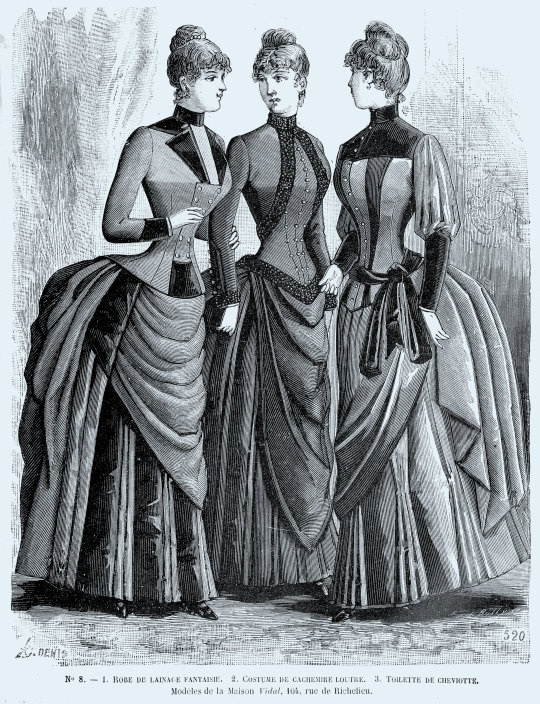
La Mode nationale, no. 33, 11 décembre 1886, Paris. No. 8. — 1. Robe de lainage fantaisie. 2. Costume de cachemire loutre. 3. Toilette de cheviotte. Modèles de la Maison Vidal, 104, rue de Richelieu. Bibliothèque nationale de France
(1) Robe de lainage fantaisie uni. Jupe, plissée à larges panneaux, formés par une bande en velours. Draperie courte sur le devant, retombant en long pouf droit derrière. Pattes de velours sur le côté. Corsage très ajusté, à plastron semblable, boutonné, coupé en carré pour laisser voir une chemisette plissée. Col, revers et parements en velours.
(1) Plain fancy wool dress. Skirt, pleated with wide panels, formed by a velvet band. Short drapery on the front, falling in a long straight pouf at the back. Velvet tabs on the side. Very fitted bodice, with a similar plastron, buttoned, cut in a square to reveal a pleated blouse. Collar, lapels and facings in velvet.
Métrage: 8 mètres lainage grande largeur. 2 mèt. velours.
—
(2) Costume de cachemire loutre. Première jupe plissée à plis plats tout autour. Seconde jupe drapée en tablier devant, formant pouf derrière. Corsage long formant gilet boutonné, recouvert par une veste Figaro. Manches très collantes. Tout le corsage, manches et col sont garnis d'une fourrure d'astrakan.
(2) Otter cashmere suit. First pleated skirt with flat pleats all around. Second skirt draped in an apron in front, forming a pouf behind. Long bodice forming a buttoned waistcoat, covered by a Figaro jacket. Very tight sleeves. The entire bodice, sleeves and collar are trimmed with astrakhan fur.
Métrage: 10 mètres cachemire en 1m,05.
—
(3) Toilette de cheviotte gris de fer. Première jupe à larges panneaux, alternés avec des petits plis. Seconde jupe drapée, très enlevée sur le côté, formant tablier devant, et pouf court très plissé derrière. Corsage boutonné retenu à la taille par une ceinture de surah, froncée négligement sur le côté. Deux montants, en surah, ornent les côtés du corsage, et rejoignent un empiècement en velours, faisant le haut du corsage. Manches larges en haut, avant-bouts de manches plats, en velours jusqu'au coude.
(3) Iron grey cheviotte dress. First skirt with wide panels, alternating with small pleats. Second draped skirt, very raised on the side, forming an apron in front, and a short, very pleated pouf behind. Buttoned bodice held at the waist by a surah belt, gathered casually on the side. Two surah uprights adorn the sides of the bodice, and join a velvet yoke, making the top of the bodice. Wide sleeves at the top, flat sleeve ends, in velvet up to the elbow.
Métrage: 9 m. cheviotte grande largeur, 1m,25 velours.
#La Mode nationale#19th century#1880s#1886#on this day#December 11#periodical#fashion#fashion plate#description#bibliothèque nationale de france#dress#bustle#suit#Modèles de chez#Maison Vidal
55 notes
·
View notes
Text
What designs are trending in curtains Adelaide-wide?
Discovering Adelaide's Latest Curtain Trends: The Home Decor Game
In the vibrant city of Adelaide, where culture meets creativity and history intertwines with modernity, curtains have become more than functional window coverings – they are stylish and personal touches and charm to every room. From classic designs to contemporary trends, Adelaide residents are embracing different curtain styles to up their home decorating game. But what designs are currently trending for Adelaide curtains? We explore the latest curtain trends that are capturing hearts and transforming homes across the city.
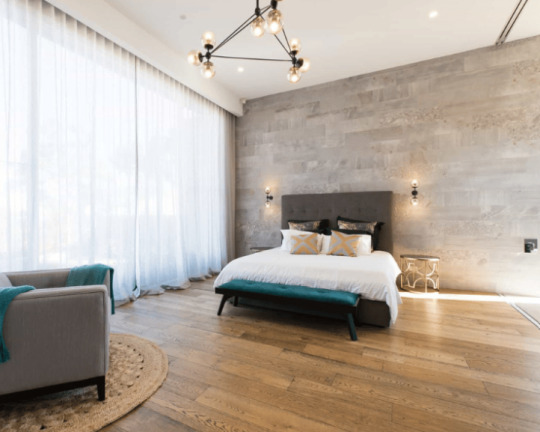
Timeless elegance: classic patterns and prints
Timeless elegance never goes out of style in Adelaide, and classic patterns and prints are making a comeback in curtain design. From traditional florals and damask to intricate stripes and checks, Adelaide residents embrace classic patterns that exude sophistication and sophistication. These timeless designs add charm and luxury to any room, creating a timeless elegance that never fails to impress.
Natural Elements: Organic Textures
Given Adelaide's proximity to nature, it's no surprise that curtains are inspired by natural elements are trendy in home decoration. Adelaide residents prefer curtains made from organic materials such as linen, cotton and bamboo, which add warmth, texture and depth to interiors. Whether in natural fibers or in earth tones of woven textures, these curtains bring an outdoor feel indoors and create a comfortable and inviting atmosphere.
Daring and dramatic: make a statement with color
For those who dare to be bold, bright colors and drama take over center stage in curtain design tones. Adelaide residents choose curtains in bold shades such as emerald green, sapphire blue and ruby red, adding personality and elegance to their living spaces. Whether as a focal point in a neutral space or combined with complementary colors to create a cohesive look, bold curtains make a statement and add drama to any interior.
Lots of sophistication: light and airy fabrics
In Adelaide's sunny climate, curtains are at their most beautiful and a popular choice because they filter natural light and create an airy and open feeling. Adelaide residents prefer light fabrics such as voile, chiffon and organza, which allow sunlight to diffuse gently into rooms while maintaining privacy. Sheer curtains add sophistication and elegance to any room, making them a timeless choice for style-conscious Adelaide residents.
The key look: combining function and style
Layered curtains are another trend that is growing in popularity in home decor in Adelaide. By combining different types of curtains, such as sheer panels with heavier curtains or curtains with decorative edges, Adelaide residents can achieve a layered look that offers both function and style. Not only do pleated curtains provide better light control and insulation, but they also add depth and dimension to windows, creating a dynamic and visually interesting focal point in any room.
Personalization: personalize home décor
In a city known for its creativity and individuality, customization is all about curtain design. Adelaide residents are increasingly choosing bespoke curtains that reflect their unique style and personality. Whether it's choosing the perfect fabric, choosing custom hardware and trim, or adding personalized touches like monograms or embroidery, custom draperies allow homeowners to create unique windows that enhance their home's decor.
Bottom line: Accentuate your home. A home with trendy curtains in Adelaide
In conclusion, Adelaide residents embrace a variety of curtain trends that reflect the city's vibrant culture and diverse design sensibilities. From timeless elegance to bold color choices, sophistication to layered looks, Adelaide offers plenty of options for homeowners looking to enhance their home decor with trendy curtains Adelaide-wide. Whether you like classic patterns, natural patterns or individual details, Adelaide has a curtain trend to suit every style and preference. So why wait? Use the latest curtain trends and transform your home into a stylish sanctuary that reflects your unique personality and taste.
0 notes
Text
The deadbolt is a steel bolt that locks into the door frame to keep your home secure.
The deadbolt is a steel bolt that locks into the door frame to keep your home secure. It’s mechanically activated with a key, thumbturn, or electronically (like smart and keyless locks).
A deadbolt takes standard door knob lock security to the next level. It’s much more difficult to break into a home with a deadbolt than with a regular spring bolt that can be loided open with credit cards, knives, and other professional tools like latch slips.
The bolt extends out of a socket in the door jamb and is secured to the strike plate by screws. Ideally, the screw holes are reinforced with metal to make it more resilient against forced entry.
CR’s lab tests show that a well-installed and maintained deadbolt is much more likely to resist breaking and entering than an unlocked doorknob. However, additional safety measures such as having a solid wood or steel-clad door and a secure door frame are essential for making your home resistant to break-ins. Decorative Trim
Decorative trim is a textile Wholesale Lock Body with Keyed Cylinder Hole embellishment used to add definition and texture to fabric items such as clothes, drapery panels, pillows, furniture and bedding. It can take the form of braids, fringe, cords, tassels and other types of textile strips that can be sewn or glued to the surface of fabric to enhance its appearance.
A door handle is a device attached to the door to facilitate opening it and closing it. It comes in a wide range of designs, shapes and finishes to fit your vision or interior design aesthetic. A handle set may feature a knob, lever or electronic keypad, and is ultimately determined by your preference.
There are many different terms that come with talking about doors and their components, so it can be difficult to keep up with everything that’s being discussed. Whether you’re discussing your vision with a professional or shopping online, the terminology can be a bit overwhelming. Keeping up with the basics can help you better understand your options and know what to ask for when ordering your door hardware. Smart Locks
Whether you're a forgetful home-owner or just have a hard time remembering where you left your keys, smart locks can help. By connecting to your home Wi-Fi, you can remotely lock and unlock your door using an app on your smartphone. Some models also come with a keypad and fingerprint reader to eliminate the need for a key.
1 note
·
View note
Text
Dora Mills and fashion in 1892

The last image is from Find a Grave (and reposted in this post), which I posted on Dora's profile there. I think the last image is NOT from the same image as the others, and is a photo taken afterwards, as in the last image she is looking down, not toward the camera.
I've written on this blog varied times about Dora Mills, my great-great grandmother. In the process, I've posted a photo, cropped and in different formats, of her in possibly July 1892 (when Mabel in her arms was reportedly born) with her family. Clearly, she had a bonnet and a dress of some kind. Luckily, University of Vermont has a great page from which one can start to have an understanding of women's clothing in the 1890s:
Compared to the fashions of the previous decade, the 1890s styles were plainer, simpler, and more practical. Women had more freedom in their clothing choices and often sported reform clothing for outdoor activities like biking. Also notable is the widespread use of the shirtwaist or blouse and skirt. All walking skirts in the 1890s were designed to completely clear the ground. In the early 1890s, the dominant skirt shape was the swooping tulip of bell form, which was snug and smooth over the hips and flared dramatically to a wide hem. The shape reappeared in the late 1890s.
In the case of Dora, she was likely not wearing a 1890s bodice:

The original source is now gone, but there's information about bodices here and elsewhere.
...or even a loose blouse.
This post was originally published on WordPress in July 2018.
Instead it was, due to the solid color and nature, likely a Tulip Bell Skirt:
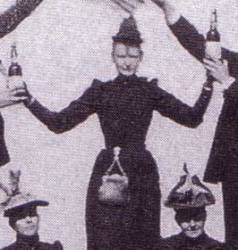
The original source is now gone.
The other fashions, the early 1890s High Puff Sleeve and 1890s Leg-o'-mutton Sleeves, she is not wearing. I looked deeper into this topic. This brings us to another account of the time, talking about women's fashions:
Women's fashions of the 1890s epitomized a new kind of woman. Romance was juxtaposed with practicality in sleek new styles. An hourglass silhouette defined the feminine form and women's clothing lost some of the restrictive aspects and over-ornamentation of the earlier Victorian era. The aging queen, once a symbol of all that was socially desirable, began to look quaint, becoming a symbol of everything old-fashioned.
Dora was not wearing a dress like others of the time as it was not fancy (also see here), but seemed more ordinary, as to say. One site specifically addressed bell skirts:
1890 saw the establishment of a very slim, perpendicular silhouette. The voluminous bustle skirt skirt had collapsed and disappeared almost overnight in 1889. Most of its applied drapery had gone with it. The new skirt was usually cut in three to five gored panels, narrow at the top and wide at the bottom. Almost all of the fulness was drawn to the back of the waist and disposed in an inverted pleat at the very centre, falling in soft folds to the hem. This made the front quite plain and tight, though some skirts were still cut with a horizontal fold or two at the back, which caused the front to form a gentle swathe of drapery. By 1892 this was eliminated, as was the train that was often found on the skirts of day-dresses of the early '90s. An alternative to the gored skirt was the one-piece circular skirt, called a bell, fan or umbrella skirt. This skirt was not usually formed from a complete circle but consisted of a close-fitting front continuous with a section of a circle, from an eighth to a quarter on each side, for the back. (A hybrid of these two styles combined a narrow front gore with a circular back). Again, all the fulness or spring in the skirt was at the back, making the front seem narrow and perpendicular. The bodice too, gave the same impression: the waist was long, sometimes an inch below the natural level and as tight as ever; the sleeves, a little full at the head, rose upwards above the shoulder, rather than outwards, and any bodice trimming such as revers or gathers were drawn into a narrow v-shape at the front. The whole effect was narrow, upright and rather prim - not a very promising start to a new decade, it would seem. But in this look were sown the seeds of a more wearable dress than had been seen for several decades, and it would be heartily embraced by the New Woman of the nineties.
What Dora wore seems like a dress worn in London in 1886 by Ellen Terry, sitting with her children, although it is not the same. I found some other sources about fashion in the 1890s, but it is either too late (1896) or about other subjects. Even so, her hat is a bit like others in an ad the year before. Then, I stumbled upon the Ladies Home Journal in 1894. I found some illustrations in volume 9 of the same journal (looking up to July 1892) that show styles that are reminiscent of what Dora wore:
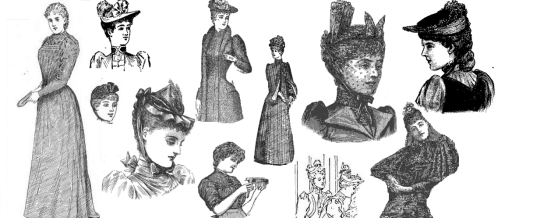
I would say that Dora almost seems like she is in her "Sunday" clothes for church. This being the case, the photo could have been taken on July 24, 1892, as that is a Sunday not long after Mabel's birth, with Mabel later adopted by Dora's sister, Margaret, with Cyrus's consent, on March 5, 1895, exactly one month after Dora's death that year!

Coming back to Dora, it seems she had a certain sense of style, in keeping with the time especially if you compare her to every other individual in the picture:

Regardless of what dress she is wearing, she is clearly wearing a bonnet of some type, likely one of the ones I found in the Ladies Home Journal. The children, as is Cyrus, also have their own certain clothing. Marion and Margaret likely are wearing the same clothing, while Robert's clothing is baby clothing but not like that which I saw elsewhere online, even on Wikimedia.
That's all for now. Until next time!
© 2018-2023 Burkely Hermann. All rights reserved.
#mills family#1890s fashion#19th century fashion#19th century#1890s#fashion#mills#family#family history#genealogy#wordpress#marriage#packard
1 note
·
View note